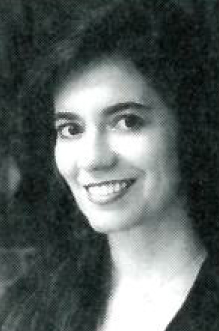
In this book you offer a synthesis of cognitive therapy—a very practical branch of psychotherapeutic practice—with Buddhist mindfulness. How did you come to that in your own work? I started in the early 1970s studying mindfulness with teachers in Bodhgaya, then with meditation masters from Burma and Tibet. So I’ve been practicing Buddhism for quite a while. And then in the mid-80s I did a postgraduate training in New York and started studying schema therapy, an offshoot of cognitive therapy which emphasizes the understanding of “schemas,” or deep emotional habit patterns. I had already been practicing mindfulness for many years, and I was very interested to see how they seemed to be talking about similar processes of transformation, one being more at the psychological level, and one at the spiritual level.
The heart of both paths had to do with how we can free ourselves from powerful emotional habits and patterns of reactivity.
The title of the book is Emotional Alchemy. What does this mean? More and more I realized that the metaphor of alchemy was appropriate to Buddhist psychology, because Buddhist psychology, rather than overemphasizing pathology, offers a refreshingly positive view of human nature. Just as gold can be tarnished, our true nature can be obscured by habits or temporary emotional patterns. This path involves removing the tarnish that obscures our true nature.
What was your impulse in writing the book? I use this work in my own personal life and found that it really works. And I just had this compassionate urge to share it with other people, with a wider audience. I feel that people suffer unnecessarily, struggle with emotions. Essentially, it’s intended to encourage people to awaken to their own true nature.
I think the whole point of this book is that if we free ourselves from afflictive emotional patterns that are so consuming in our own lives, we can be freer and deepen in compassion and wisdom. The less preoccupied we are with our own struggles and emotional habits, the more we can be really there with others.
From Emotional Alchemy:
In the movie The Matrix, humans are born into a world where their actual body lies in a cocoon pod, unmoving, while their brain is fed inputs that create an entire world—a virtual reality of compelling resonance, though completely illusory. Although trapped in their cocoon pods, the people portrayed in The Matrix experience this collective dream as the reality of their daily lives. From the Buddhist perspective, that might be an intriguing metaphor to reflect on for our own situation: living in a dreamlike reality without realizing it.
Buddhism proposes a radical path to liberation from this illusory world we create with our habitual thoughts and emotions, a path that alters our ordinary way of taking in the world. To see clearly—to perceive things as they are—we must break the chain between the percept and the concept. This break comes after the senses connect with the object of perception, but before the great flywheel of mental habit boxes that perception in stale cubbyholes of thoughts and feelings.
Opening up a space in the mind at this critical point offers a fulcrum between our raw perceptions and the inexorable weightiness of our habitual thoughts and feelings. If we can suspend these mental and emotional habits for even a moment, that gap allows an insight into the mind at a new level. As we become aware of how our habitual mental responses rush in to fill that gap, creating their magical display yet again, we have a new opportunity to investigate the workings of the mind with refined subtlety.
The ordinarily invisible mechanics of the mind hat usually define our reality for us are suddenly exposed to the light of awareness: Instead of being terrified by the booming voice of the Great Oz, we suddenly see the little man behind the screen bellowing into a microphone. This revelation lays bare the magical hands that usually shape our world for us. And that gives us the chance to explore our emotional reactions as well as the most basic elements of our thoughts, with fresh eyes.
We usually take our habitual thoughts and emotional reactions as a given, an inevitable part of our experience. But investigating the mind at the subtlest level lets us see how emotions and thoughts begin in our very first reaction to what we perceive.